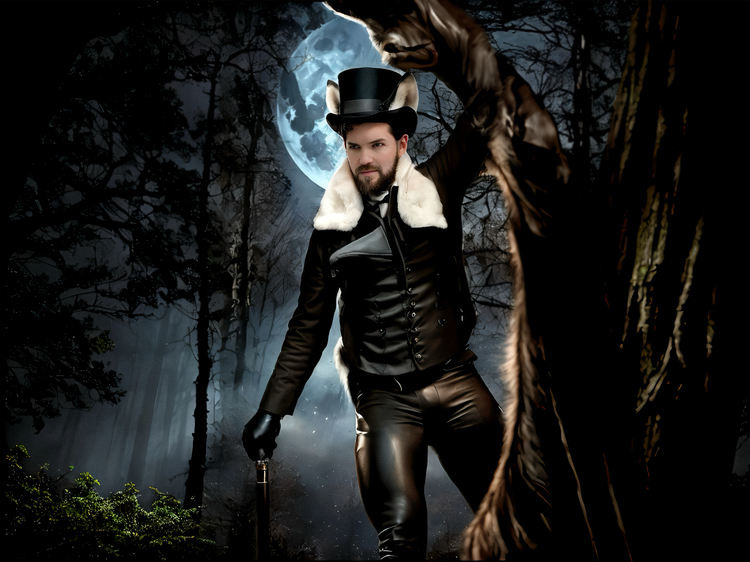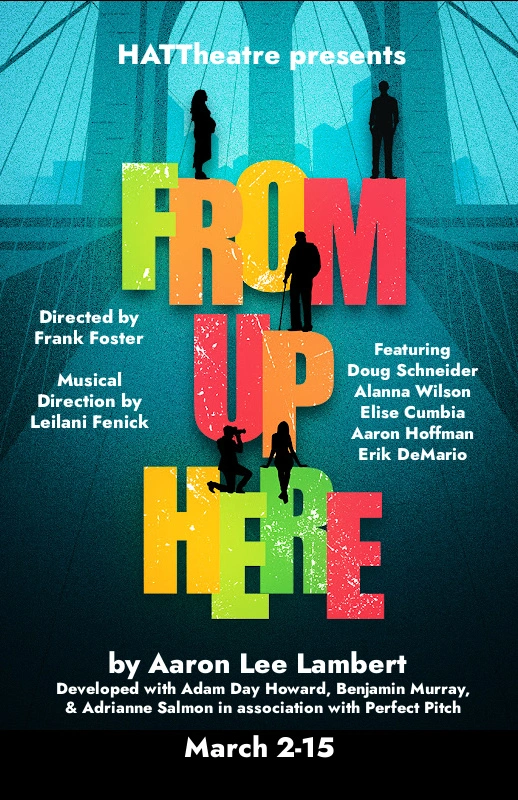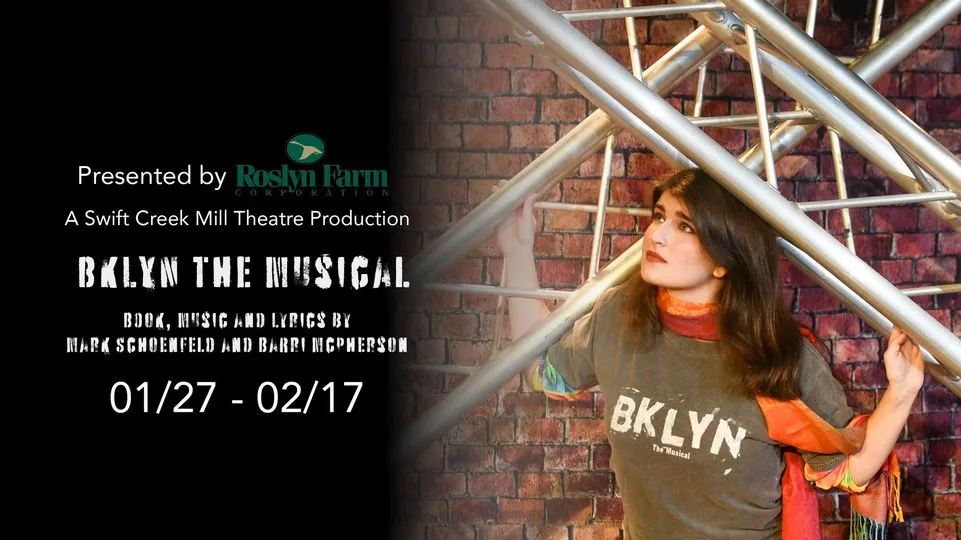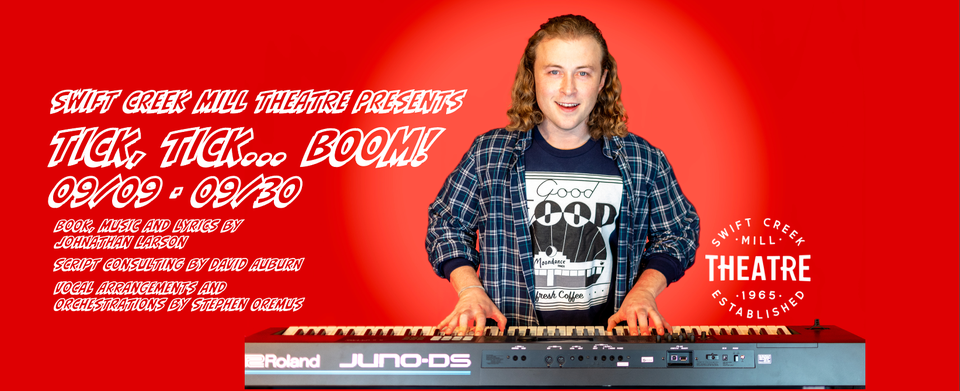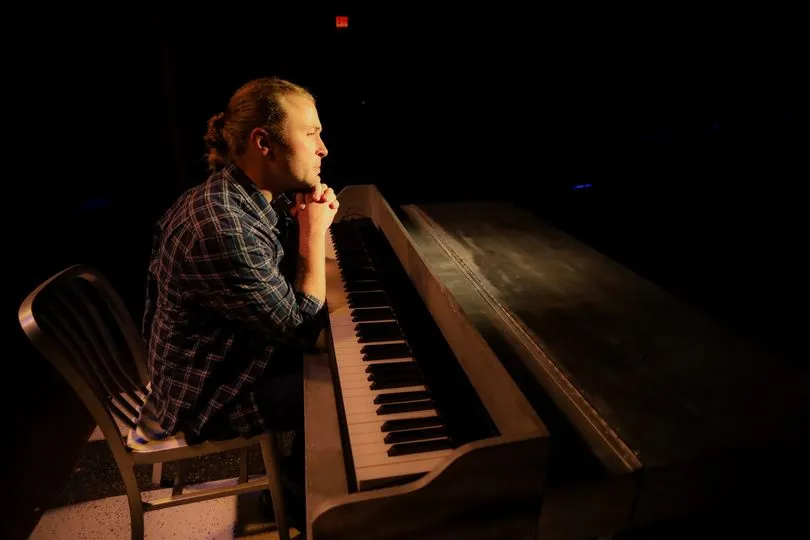Once Upon a Time, Later – or – What Happens After “Happily Ever After?”
A Musical Theater Review by Julinda D. Lewis
Presented By: Richmond Shakespeare
At: Cramer Center for the Arts, The Steward School, 11600 Gayton Rd., RVA 23238
Performances: March 7-24, 2024
Ticket Prices: $22-$47 [Adults $47; Seniors 65+ with ID $42; Military with ID $22; Students $22]
Info: (804) 340-0115 or http://www.richmondshakespeare.org
What happens after “happily ever after?”
Sondheim and Lapine’s extravagant musical, Into the Woods (1987), has a lot going on. For one thing, there is a large cast of characters drawn from various Grimm’s fairy tales, from Little Red Riding Hood to Jack (of the magic beans and giant fame). There are princesses in towers (Rapunzel) and elsewhere (Cinderella) and princes who do not live up to expectations for “happily ever after” – Cinderella’s prince and Rapunzel’s prince, who are brothers with lustful, wandering eyes for the purpose of this plot. There are peasants and royalty, a wicked witch, a wolf with pedophilic tendencies, and a little girl with an implied eating disorder. There is a narrator that the other characters, in a rare show of solidarity, throw under the bus – and that’s just for starters. And just in case you were wondering – as you should have been – despite the Disney inspired costumes and light-hearted, guffaw-inducing moments that pepper Act 1, this is not a family-friendly show. Half the lead characters meet untimely deaths in Act 2. The bloody demise of those who are smushed by the giant’s foot is indicated by a red wash on the background, and sometimes accompanying sound effects.
Be careful what you wish for.
At the center of the main plot we find The Baker and The Baker’s Wife (Durron Marquis Tyre-Gholson and Maggie Marlin-Hess). The childless couple wish more than anything for a baby, but soon discover that their barrenness is the result of a witch’s curse that goes back a generation when The Baker’s father helped himself to the witch’s garden. Tyre-Gholson (who, much to my surprise, is making his Richmond Shakespeare debut) deftly establishes himself as a reluctant hero. He tries on the cloak of an alpha male, but it doesn’t fit him well, yet we find ourselves cheering for him and his persistence in the face of probable defeat as he sets off on a life changing scavenger hunt in the woods. Marlin-Hess, similarly, achieves a delicate balance. She is, at once, the supportive wife of the baker, a woman with an independent mind and a resolute disposition (think, by any whatever means necessary), who holds an emergent passion that finds unforeseen fulfillment in the woods.
The prettier the flower, the farther from the path.
Into the Woods is very much an ensemble show, with strong leads and strong voices singing what I would characterize as challenging music, but some characters nevertheless stand out. My hands-down favorite is Little Red Riding Hood (Gracie Berneche) who wrings every last drop of humor and drama from each line she speaks. Now, normally, it is bad manners to mention an actor’s size, but in this case, Berneche’s stature is key to her role. Constantly referred to as a “little girl,” this Riding Hood makes a running joke of scarfing down the goodies she’s supposed to be taking to Grandma’s house. She deliberately talks with her mouth full, and creates one of the show’s funniest physical comedy moments as she and The Baker’s Wife juggle sweets and cakes as Riding Hood tries to fill her basket – a basket, by the way, that she commandeered from The Baker’s Wife. Berneche’s childlike allure makes it all more creepy when The Wolf (Terence Sullivan) peppers her with sexual innuendo, while diverting her from the path to her grandmother’s house in the woods. The dual role of The Wolf/Cinderella’s Prince emphasizes the lustful, narcissistic nature of both characters as they seduce, respectively, Little Red Riding Hood and The Baker’s Wife, in the woods. Sullivan’s dual roles are masterfully delicious and shiver-inducing – perhaps playing on the appeal of the bad boy. But also, the wolf’s ears, tail, and leather jacket are one of the best, most fun costumes, as well.
“You’re so nice. You’re not good, you’re not bad, You’re just nice. I’m not good, I’m not nice, I’m just right. I’m the witch.
Going back to the idea that this is an ensemble, it seems both appropriate and anathema that The Witch (Susan Sanford) had the star’s turn during the closing bows. The Witch, after all, is the only character that has the ability to fill in any of the backstory. At the same time, she does not have the most lines or greatest stage time. But Sanford’s rich vocals and The Witch’s makeover from old hag to bewitching diva, are worthy of recognition. Speaking of which, The Witch’s Act 2 costume and the costumes and wigs of Cinderella’s Stepmother (Hannah Zold Story) and Stepsisters Florinda (Katherine S. Wright) and Lucinda (Kylee Márquez-Downie) reminded me of drag queens – but without the expected sassiness. The Witch loses her powers and Florinda and Lucinda have their eyes pecked out. These characters’ journey into the woods do not bring about the desired results.
Slotted spoons don’t hold much soup.
In my humble opinion, Jack’s Mother (Lauren Leinhaas-Cook) was decidedly more evil than The Witch. She certainly wouldn’t win any awards for mother of the year. She berates and belittles Jack, then defends him when it’s time for him to face the consequences of his actions. These are the actions of an enabler. This role gives Leinhaas-Cook an opportunity to enjoy being nasty, and we don’t feel any great loss at her accidental demise. Let’s face it, Jack (Lukas D’Errico) would never be able to grow up under her nagging eye. In the end, he’s left looking for someone to take care of him, because his mother never taught him how to be an adult. She just sent him off on fruitless and self-serving quests into the woods. The Witch, who had whisked away Rapunzel (Sara Dabney Tisdale) from her parents at birth was no model mother, either. Locked away in a tower in the woods, Rapunzel ended up the single mother of twins, lost her Prince, her mind, and eventually her life as well. Apparently, one does not develop good life coping skills living in isolation in the woods.
Careful the things you say…children will listen.
While Act 1 is a quest to find fulfillment of all the characters’ wishes, Act 2 shows us what happens after “happily ever after.” With Act 1 running approximately 90 minutes, it almost seems as if the show is over at the end of Act 1. But wait, there’s more. Act 2 shows us the consequences of getting what you wished for. There is a fantastic scene in which the surviving characters – after much of the slaughter and bloodshed – all point the finger of blame at each other: The Baker, The Baker’s Wife, The Witch, Jack, Jack’s Mother, Little Red Riding Hood (who is never at a loss for snarky comments, with accompanying facial expressions and body language). It’s a comedy. It’s a parody. It’s a satire. It’s a musical. It’s a morality play. It’s a metaphor for Life. Into the Woods is where life happens. Some emerge triumphant, some do not emerge at all. As 2010 Internet sensation Antoine Dodson once said, “Hide yo’ kids, hide yo’ hide yo’ husbands ‘cause they’re rapin’ everybody out here.” Go see Into the Woods, but leave your kids at home.
—–
Julinda D. Lewis is a dancer, teacher, and writer who was born in Brooklyn, NY and now lives in Eastern Henrico County. When not writing about theater, she teaches dance history at VCU and low impact dance fitness classes to seasoned movers like herself, and occasionally performs.
—–
INTO THE WOODS
Book by James Lapine
Music and Lyrics by Stephen Sondheim
Directed by Jase Smith Sullivan
Musical Direction by Kim Fox
Cast
Narrator/Mysterious Man …………… J.C. Bussard
Cinderella …………… Grey Garrett
Jack …………… Lukas D’Errico
Jack’s Mother …………… Lauren Leinhaas-Cook
Milky White …………… Katherine Malanoski
The Baker …………… Durron Marquis Tyre-Gholson
The Baker’s Wife …………… Maggie Marlin-Hess
Cinderella’s Stepmother …………… Hannah Zold Story
Florinda …………… Katherine S. Wright
Lucinda/US Cinderella …………… Kylee Márquez-Downie
Little Red Riding Hood …………… Gracie Berneche
The Witch …………… Susan Sanford
Cinderella’s Father/The Steward ……….. Eddie Webster
Cinderella’s Mother/Granny/The Giant … Heidi Johnson Taylor
The Wolf/Cinderella’s Prince …………… Terence Sullivan
Rapunzel …………… Sara Dabney Tisdale
Rapunzel’s Prince …………… Field Oldham
Ensemble/US The Wolf/Princes ………… Thomas Kaupish
Ensemble/US Jack …………… Milo Jones
Ensemble/US Little Red Riding Hood ….. Belén Tarifa
Production Team
Artistic Director …………… James Ricks
Managing Director …………… Jase Smith Sullivan
Music Director …………… Kim Fox
Production Stage Manager ……… Shawanna Hall
Assistant State Manager/
Properties Design …………… Jordan Dively
Assistant State Manager/
Character Double …………… Diandra Chiaffino-Butts
Hair and Makeup Design …….…. Amanda Blake
Costume Design …………… Keith Walker
Lighting Design …………… Michael Jarrett
Puppet Design …………… Heidi Rugg
Scenic Design …………… Todd LaBelle
Scenic Design …………… Katherine Malanoski
Sound Design …………… Grace Brown LaBelle
Production Manager/
Sound Board Operator ……….. MariaElisa Costa
House Manager/
Production Assistant ………… Kiari Hicks
Costume Assistant …………… Susan Frye
Master Electrician …………… Emily Vial
Follow Spot Operator …………… Parker Beard
Follow Spot Operator …………… Wyatt Roberts
Box Office …………… Nata Moriconi
Musicians
Conductor/Keyboard 1…………… Kim Fox
Bass …………… Bea Kelly
Drums …………… Steve Raybould
Cello …………… Lauramarie Laskey
Clarinet …………… Marc Krauss
Flute …………… Stephanie Shumate
French Horn …………… Gretchen Georgas
Keyboard 2/Synthesizer ………… Ian Krauss
Trumpet …………… Steve Fenick
Violin …………… Marissa Resmini
Run Time: approximately 3 hours, with one 15-minute intermission
———-
Photo Credits: Photos from Richmond Shakespeare Facebook page









Make a donation to support the publication of RVART Review
Make a monthly donation
Make a yearly donation
Choose an amount
Or enter a custom amount
Your contribution is greatly appreciated. Thank you.
Julinda D. Lewis
Your contribution is appreciated.
Your contribution is appreciated.
DonateDonate monthlyDonate yearly
